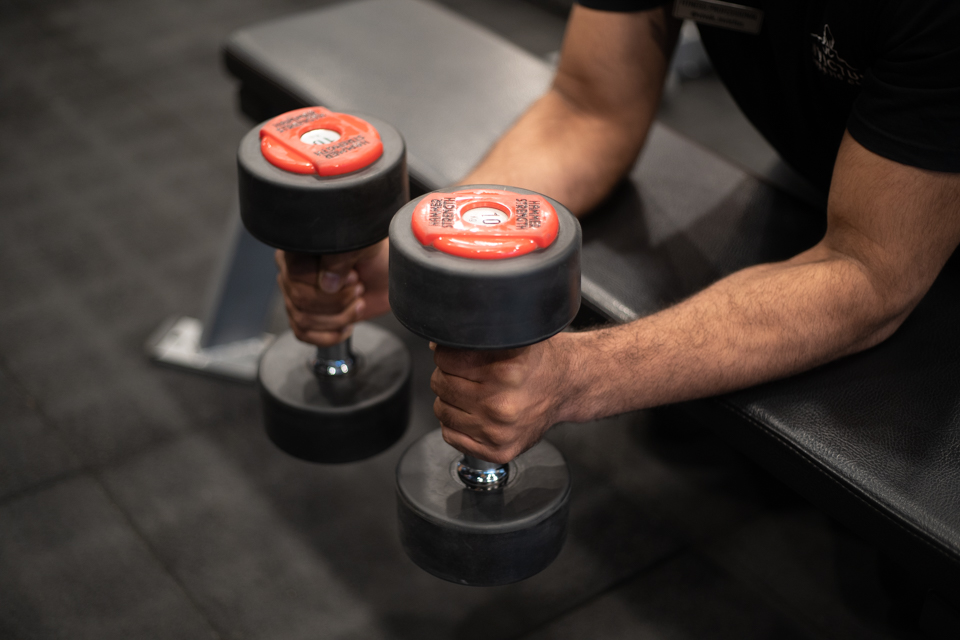Types of grip
A grip change can make a massive difference to an exercise. A lot of trainers and trainees underestimate the impact of different grips… In this article, I’ll explain a few things about grip and the difference it can make to an exercise and therefore to your body.
Understanding the different grips
There are 3 main commonly referred to grip positions, but it is more like a continuum. You can also have your grip anywhere in between.
An ‘overhand’ grip is technically called a pronated grip. As the position of your bar can change, in this grip your thumbs point towards each other like in pull-ups.
An ‘underhand’ grip called a supinated grip is the opposite. This is where your thumbs point away from each other like in a typical bicep curl.
A ‘hammer’ grip is called a neutral grip. With this, the thumbs point in a parallel direction like a rope tricep pull-down.
Like I said before, you could also be using an in-between grip. This could be a semi-pronated or semi-supinated position of varying angles. Some exercises like a face pull will even have a dynamic grip that starts in a more neutral grip, but while you work through the range of motion, it will change to a pronated grip.
The muscles involved with grip
There are many muscles in your lower arm and they can be separated into two main groups. The Flexor Carpi group and the Extensor Carpi group. For the purposes of grip, we are mainly interested in the Flexor Carpi group which runs down the inside of your forearm. The tendons of these muscles run down over your wrist and then hand and along your fingers, generating a lot of your hand/grip strength.
The great thing about these muscles are generally very quick to recover, are capable of a lot of volume, so it is possible to build up and train them almost every day. You will, however, need to vary the exercises each time. Get a lot of variety in. And remember that curls are not the only way to train your grip. Isometric hold exercises like deadlifts, hangs, farmers walk, rope pulls etc. are a great way to build grip strength.
Supination and Pronation
Earlier we talked about supinated and pronated grip. These are positions and the words ends in ‘ed’. But the movements to get into these positions ends in ‘tion’ or ‘ing’. So to get into a supinated grip I perform a movement that is called ‘supination’ or ‘supinating’.
The main muscles involved in supination is the bicep brachii and the supinator muscle. For pronating, the main muscles are pronator quadratus, pronator teres and anconeus.
Taking advantage of your grip knowledge
So let’s look at a basic bicep curl. You already know that your biceps brachii causes your elbow to flex. Now you also know that it is also an important supinator. So, to get a better curl in terms of function, we can start our curl in a neutral position at the bottom and then go through supination so that we finish at the top of the range in a supinated grip. The bicep has had to work through two planes of motion, causing two movements, with a single concentric (shortening) contraction.
Let’s look at another example. A pull up is traditionally performed using a pronated grip (thumbs pointing towards each other). This means your elbows are out and your shoulder is moving mainly in the frontal plane (side-side) in adduction and abduction. This means your latissimus dorsi is a prime mover and your biceps are working but through a smaller angle of flexion and extension at the elbow.
If we switch our grip to a neutral position, the exercise becomes a chin-up. There are now a lot of changes. First, we are changing the angle at the shoulder. Then we have changed the plane of motion to a more sagittal plane (forward-backwards) which changes the joint action to shoulder flexion and extension as opposed to abduction and adduction. This also works the latissimus dorsi but in a very different way due to these changes. Some good variety! At the elbow, we keep the same joint action, but the range of motion increases a lot making the biceps work much more than before. And additionally with a change at the forearm, we are not just working the biceps, but bring in the brachioradialis muscle as well.
Conclusion
So a simple grip change can alter an exercise so very much. It can work the same muscle to a different level of activation, it can make the same muscle work through a different angle, it can completely change the plane of motion and the joint action and therefore even the muscles being used!
So play around with grip and not just for variation. You may find that you get a better mind-muscle connection with a certain exercise with a little tweak in your grip or grip width. This can give you a boost and help you progress that little bit better, faster or both.
Follow me on Instagram












0 Comments